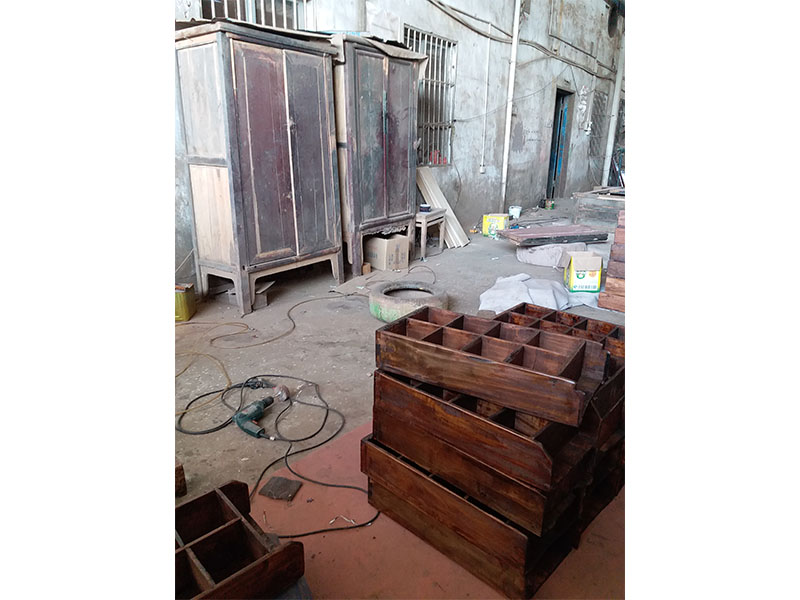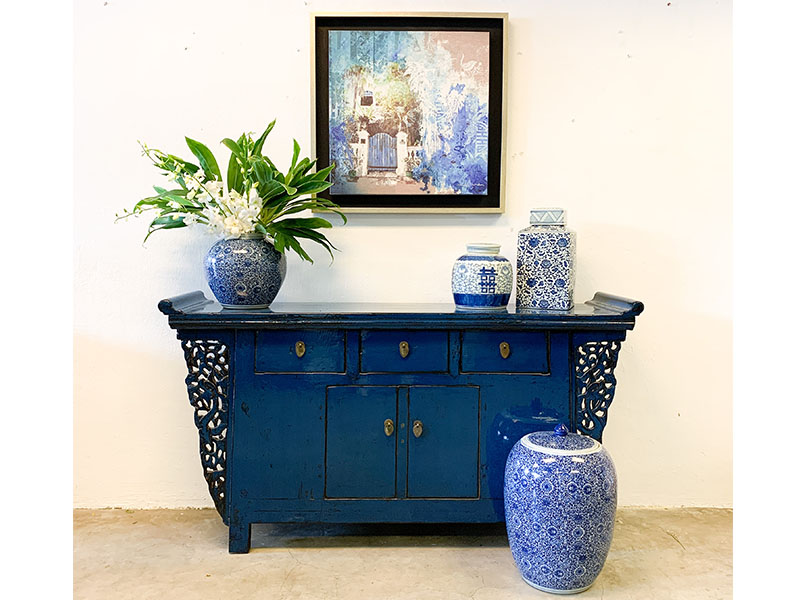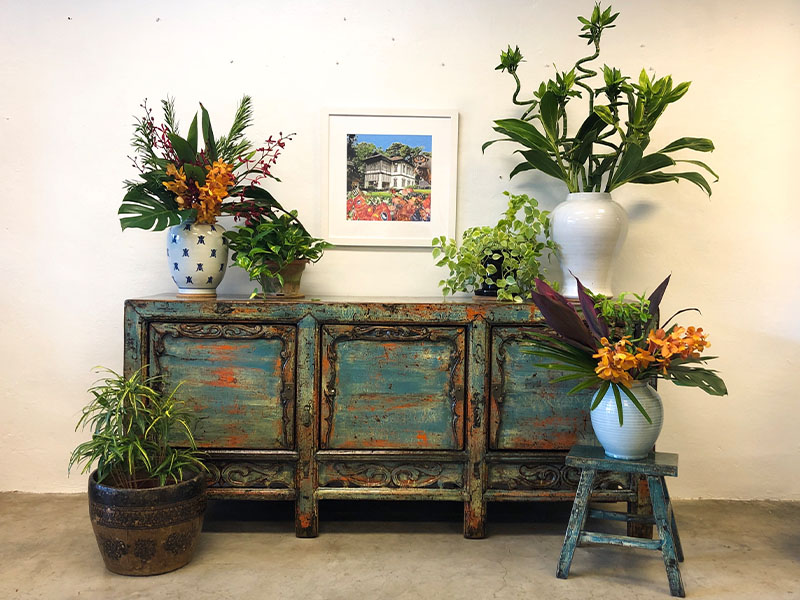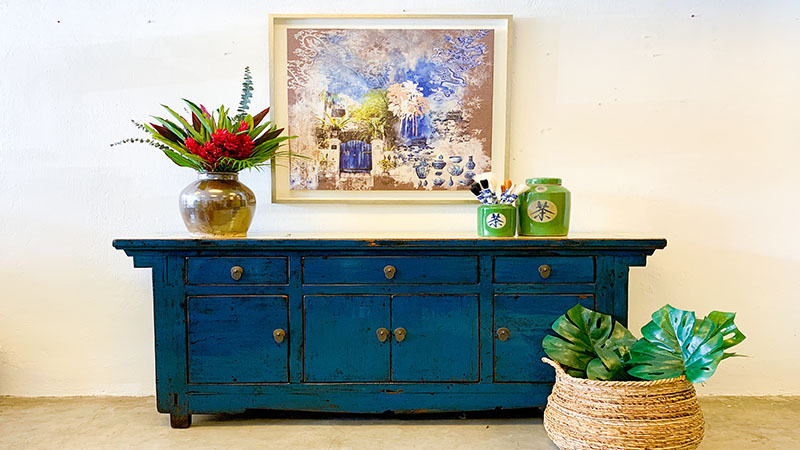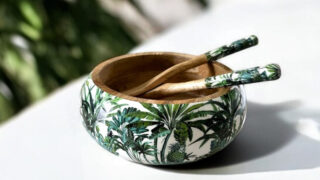Not all vintage or antique Chinese furniture was created equal! Only a few pieces are restored to a superior quality. And some reproductions are far better than others. So how do you know if you’re buying a “good” piece of vintage or antique Chinese furniture?
Just about every item of vintage Chinese furniture has an amazing history, with many coming from old villages and farmhouses before ending up here in Singapore. Wouldn’t it be cool to have a real piece of history in your home – one with a story all of its own?
Of course, the vintage pieces you see in shops didn’t look like that when they were first rescued from old homes in China. These structures were often being torn down to make room for new, modern buildings. Many of the handmade treasures had fallen into disrepair – only when they were rescued by craftsman did they have new life breathed back into them.
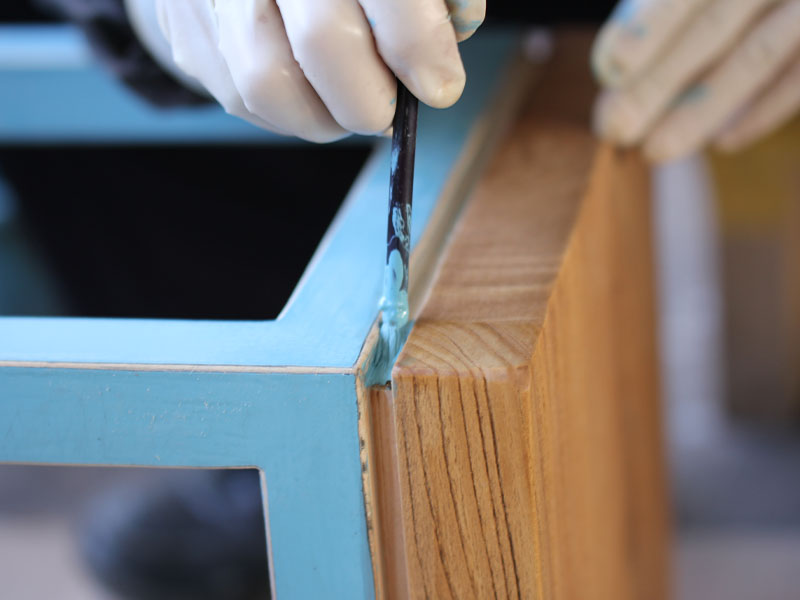
CHANTAL TRAVERS, owner of Emperor’s Attic, lived in Beijing for many years before moving to Singapore, where she now runs her furniture store at the Tan Boon Liat Building, specialising in antique and vintage Chinese furniture.
“When I lived there, everybody had their own place where they would go to buy antique Chinese furniture. ‘Come and see my guy – he’s the best!’ So, that person’s guy would become your guy, and you’d start to find the people you trust. I’ve now been working with the same people for more than a decade. I personally choose every single piece we have in the store and I have it all authenticated. When that shipment arrives, I know exactly what I’m getting.”
And that, folks, means you know what you’re getting when you buy it, too. Your furniture will have a story you can share.
Reproduction: not a dirty word
But not everybody needs a backstory. For many, it’s more important to have a piece that is functional and fits into your home. Reproductions can be beautiful, too – just be aware that if you’re buying a reproduction, you’ll want it to be as well made as the old ones.
How can you ensure a piece is well made? There are two important factors here: the materials it’s made from, and the techniques used. Wood from Northern China is exposed to a very wide range of temperatures – from around minus 25 to plus 40 degrees Celsius; subsequently, it can survive in any climate. Furniture made from wood from Southern China, on the other hand, tends to only do well in heat and humidity.
Also, traditional carpentry techniques help to ensure that wood can move according to different climates and seasons; that means if you relocate to a different climate (as many of us will), your furniture won’t crack or warp. Furniture that is glued and nailed and uses southern wood just won’t stand the test of time. And who wants to buy a piece of furniture you plan to get rid of in a couple of years?
Emperor’s Attic does carry reproductions, though you’d be hard-pressed to figure out which one is new versus vintage when you walk through the showroom. But no worries: it’s all clearly marked with a tag for you to see.
“Most of our furniture is vintage and antique,” explains Chantal. “So, it’s important that reproductions feel like the real thing and are of the highest quality.”
For the record, reproductions aren’t necessarily any cheaper than antiques. The techniques can be too labour-intensive to save costs, which means the price tag ends up being about the same. All to say, you should buy the piece that makes your heart zing!
Limited supplies
In recent times, the Chinese government has made all of the furniture factories move outside the city. These factories already had a tough time attracting young workers. Now? It’s virtually impossible for them to find new blood. The upshot is that the furniture industry – particularly vintage and antique restoration – is a dramatically changing trade.
Craftsmen are retiring and few people are training to take their places. Those who do remain ask for a pay rise after every Chinese New Year period, driving prices ever higher. The coronavirus has also made not only sourcing vintage Chinese furniture very difficult, but also shipping it – for now, at least.
The antique Chinese furniture itself is getting harder and harder to find, too. There simply isn’t as much stock for the craftsmen to restore. Chantal still has her special suppliers, but many others have folded shop rather than move to the country. Inventory is dropping.
All of which means that there are fewer and fewer pieces available to buy. So, if in the back of your head you’re thinking, “I’ll get a beautiful Chinese furniture piece before I repatriate,” you might want to reconsider and buy sooner. The time to buy is now!
“It could be as soon as five years before all this antique furniture coming out of China dries up,” says Verity Dibben, Chantal’s right-hand in the store. “We may not have access to this stuff much longer.”
Emperor’s Attic
#01-10 Tan Boon Liat Building, 315 Outram Road
6270 2544 | emperorsattic.com
This article first appeared in the May 2020 edition of Expat Living. You can purchase a copy or subscribe so you never miss an issue!
Don't miss out on the latest events, news and
competitions by signing up to our newsletter!
By signing up, you'll receive our weekly newsletter and offers which you can update or unsubscribe to anytime.

